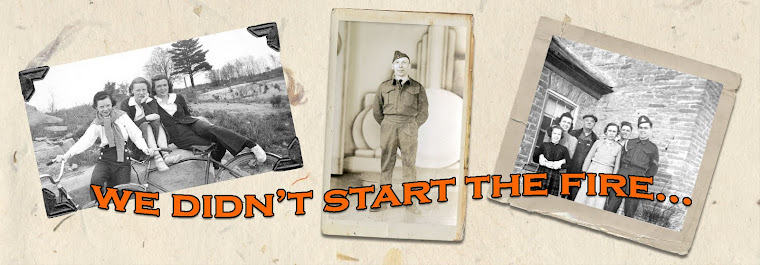I was born and raised in
Oshawa, Ontario. I'm sure some of you have heard of it, sometimes it's referred to as "the dirty shwa" or "the armpit of Ontario". Anyway, if you have heard of my lovely, relatively safe, blue collared hometown it's probably because of
General Motors. The national headquarters is located there, not to mention two car plants, a truck plant, a paint shop, the Canadian Regional Engineering Centre (where most of the designing is done) and countless other affiliated automotive industries. You also may have
read/heard about GM's latest announcement to cut 1200 jobs by eliminating the third shift at the truck plant. Not surprisingly, this decision is going to effect many people who live in Oshawa and the surrounding area as well as the economy of the region.
While GM boardroom decisions can have a negative effect on Oshawa, there are also many reasons to praise the big business. Oshawa's OHL team, the Oshawa Generals, is well known for kick-starting the careers of hockey legends like Bobby Orr and Eric Lindros. General Motors Centre, built just last year and partly funded by GM, has brought new life to the downtown. But what is more interesting to me, and more to the point of public history, is that Oshawa would not be the city it is today without Colonel R. S. McLaughlin.
In 1867 the McLaughlin Carriage Company was the largest in the British Empire. It moved its factory to

Oshawa in 1876 from a small town north of the city. Toward the turn of the century, R.S. McLaughlin (affectionately known as Sam) encouraged his father (then owner) to switch to the manufacturing of automobiles. The McLaughlin Motor Car Company was created in 1907. A year later, the McLaughlins teamed with Buick and in 1915 with Chevrolet. McLaughlin cars were known for their reliabilty and quality but in 1918 Sam realized the best way to ensure success was to join forces with the booming company, General Motors. Sam became president of General Motors Canada and the headquarters remained in Oshawa. The McLaughlins were known throughout Oshawa and the surrounding areas.
I was fortunate enough to work at
Parkwood, the R.S. McLaughlin Estate, National Historic Site for four summers. The estate dates to 1917 and was the home of Sam, his wife, and their five daughters. It now serves as a community museum which displays the original furnishings and anything else you can think of that belonged to the family. While I worked there I gained a lot of experience in archiving, tours, and museum management - something I don't think I would have gotten at a provincial or national museum. For one summer, I was responsible for cataloging, conserving, and preserving family archives.
Every summer, visitors come from around the world and are amazed at Parkwood and

its grounds. But for the most part, Parkwood is still very unknown; citizens of Oshawa will often come in for a tour admitting they've lived in Oshawa their entire lives and not known about Parkwood (they know about Sam though). What's even more interesting, to me anyway, is that Parkwood has been the site for the filming of many
movies: Billy Madison, Hollywoodland, X-Men, Chicago, The State Within (a wicked BBC production, by the way), to name a few. It was even featured on the TV show Rich Bride, Poor Bride (it's a wedding hotspot ladies!!!!). A lot of the times, visitors come just to see the staircase where Adam Sandler walked down, or the Xavier's School for Gifted Youngsters.
My point is this: there are a lot of museums just like Parkwood all throughout Canada and sometimes they are the best ones. A tour of Parkwood is filled with anecdotes and family stories; tours are limited to 15 people so visitors and tour guides form a rapport that, I think, leads to a better museum experience. I know for certain that the reason I am in public history is because of Parkwood. The community size of the museum meant that I could be responsible for things like grants, archiving, and sometimes security (not to mention the lack of funding...errr).
So go out and explore the lesser known museums in Canada (like Nana's beloved
Spadina House or London's Eldon House). While an internship at the Canadian War Museum or History Television or the ROM might look better on a resume, I think you'll get more experience and have more fun at a smaller community museum. Next time you meet anyone from Oshawa you can think of more than GM. Heck, you might even surprise them with your knowledge of the McLaughlins and the history behind the city.
P.S. If anyone is ever in the Oshawa area and wants a tour of Parkwood, let me know! :D Ghost stories included.
P.P.S. I have to mention that Adam and I had a similar conversation in the Grad Club last night. ; )







 nnot help but imagine the palace in all its glory with painted murals and beautifully dressed women and men. In George's novel she writes of a banquet for Henry VII and family that consisted of "venison, crayfish, prawns, oysters, mutton, braw, conger-eel, carp, lamprey, swan, crane, quail, dove, partridge, goose, duck, rabbit, fruit custard, lamb, manchet, and so on...."2
nnot help but imagine the palace in all its glory with painted murals and beautifully dressed women and men. In George's novel she writes of a banquet for Henry VII and family that consisted of "venison, crayfish, prawns, oysters, mutton, braw, conger-eel, carp, lamprey, swan, crane, quail, dove, partridge, goose, duck, rabbit, fruit custard, lamb, manchet, and so on...."2


